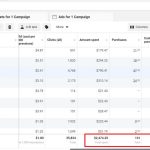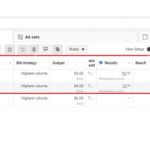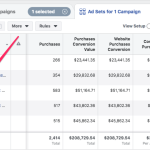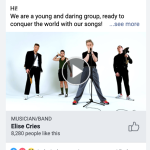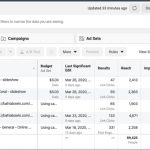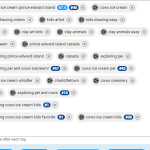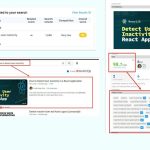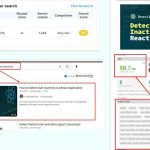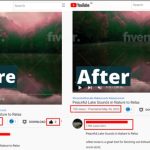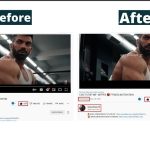
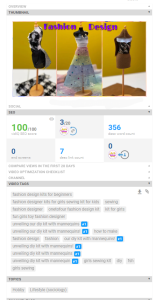
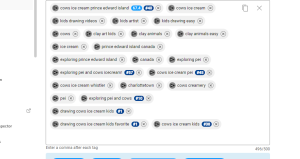
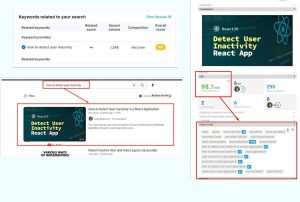
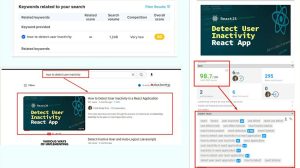


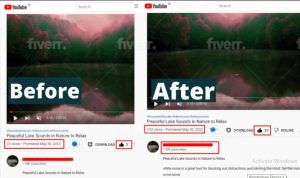

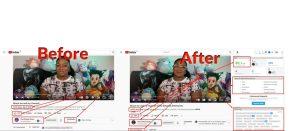

General YouTube Marketing
YouTube marketing involves promoting products, services, or brands through videos on YouTube. It includes creating engaging content, optimizing for search, using ads, and building a subscriber base to drive traffic.
YouTube is important for businesses because it offers vast reach, engages audiences visually, enhances brand visibility, drives traffic, boosts conversions, and provides powerful analytics for targeted marketing and growth.
YouTube enhances brand awareness by allowing businesses to create engaging video content that resonates with a broad audience. With targeted ads, SEO optimization, and viral potential, brands can reach new customers, increase recognition, and build a strong, memorable presence.
The most effective content types on YouTube also include unboxing videos, Q&A sessions, customer testimonials, live streams, and explainer videos. Trending challenges, giveaways, and user-generated content can also drive engagement. High-quality, value-driven content that entertains, educates, or solves problems generally performs best, especially when optimized with attention-grabbing thumbnails and titles. Consistency in posting, interaction through comments, and incorporating calls-to-action (CTAs) further enhance the content’s success in building a loyal audience and increasing brand visibility.
Video length in YouTube marketing is significant because it affects viewer engagement, retention, and ranking. Short videos (under 5 minutes) grab attention quickly, while longer, in-depth content can increase watch time, boost SEO, and build stronger audience connections.
Posting consistently on YouTube, ideally once or twice a week, helps maintain audience interest and boosts channel growth. Regular uploads keep your content fresh, improve engagement, and signal YouTube's algorithm, increasing the chances of better visibility and reach.
Live streaming on YouTube offers real-time audience engagement, instant feedback, and increased interaction. It helps build stronger community connections, promotes authenticity, and boosts brand trust. Live streams can also enhance visibility, encourage longer watch times, and generate immediate viewer responses.
Content Creation
Storytelling in YouTube marketing captivates audiences by creating emotional connections, making content relatable, and enhancing brand authenticity. It helps convey a brand’s message engagingly, builds viewer loyalty, and encourages shares, ultimately driving higher engagement and conversions.
Video editing tools like Adobe Premiere Pro, Final Cut Pro, DaVinci Resolve, and iMovie provide advanced features for cutting, color grading, and effects. Other tools like Filmora and HitFilm Express offer user-friendly options for beginners with essential editing capabilities.
Video quality is crucial for audience retention, as clear visuals and audio enhance the viewer experience. High-quality content reflects professionalism, builds credibility, and keeps audiences engaged, while poor quality can lead to viewer drop-off and decreased watch time.
A compelling video title is clear, concise, and includes relevant keywords for searchability. It should spark curiosity, convey value, and create a sense of urgency or interest. Using numbers, power words, and emotional triggers can also increase clicks and engagement.
Thumbnails are essential in YouTube marketing as they serve as the first visual impression of a video. An eye-catching thumbnail grabs attention, boosts click-through rates, and enhances brand recognition, ultimately driving more views and increasing audience engagement on the platform.
To optimize video descriptions for better SEO, include relevant keywords, provide a clear summary of the content, and use timestamps for easy navigation. Adding links to related content, a call to action, and relevant hashtags can also improve search visibility.
SEO and Optimization
YouTube SEO involves optimizing video content, titles, descriptions, and tags to improve visibility and ranking in search results. It’s crucial because higher rankings lead to increased views, subscriber growth, and audience engagement, ultimately driving channel success and brand awareness.
Tags are keywords used to categorize YouTube videos, improving discoverability. They should be relevant, specific, and include variations of main keywords to enhance search visibility and attract the target audience.
To improve your video’s ranking on YouTube, optimize titles, descriptions, and tags with relevant keywords, create engaging thumbnails, encourage viewer interaction, and promote sharing across social media platforms for increased visibility.
Engagement metrics, such as watch time, likes, comments, and shares, are crucial for YouTube SEO. They indicate viewer interest, influencing rankings and visibility in search results and recommendations.
To create effective end screens and cards, include compelling calls to action, promote relevant content, keep designs simple, and ensure they align with video themes to boost viewer engagement and subscriptions.
YouTube's algorithm analyzes viewer behavior, engagement, and video relevance to recommend content. It prioritizes watch time, likes, comments, and shares, aiming to enhance user experience and keep viewers on the platform longer.
To analyze competitors on YouTube, examine their content strategies, video performance, audience engagement, tags, and thumbnails. Use tools like TubeBuddy or VidIQ for insights into their keyword usage and analytics.
Analytics and Performance
Audience retention data reveals how well content keeps viewers engaged over time. High retention indicates compelling content, while drops suggest disengagement. Analyzing retention patterns helps identify strengths, weaknesses, and optimal content length, guiding improvements for future videos or presentations.
Interpreting audience retention data involves analyzing viewer engagement throughout content. High retention rates indicate effective storytelling and relevance, while declines may signal areas needing improvement. This data helps creators optimize content length, pacing, and topics to better resonate with their audience.
Setting goals for a YouTube channel involves identifying specific, measurable objectives such as increasing subscriber count, enhancing viewer engagement, or achieving a target number of views. Goals should align with content strategy, audience interests, and overall branding to ensure sustainable growth.
Watch time is the total duration viewers spend watching a video or channel. It matters because higher watch time boosts rankings in YouTube's algorithm, leading to increased visibility, engagement, and potential ad revenue. It's a key metric for channel success.
Analytics provide insights into audience behavior, preferences, and engagement metrics. By examining data like watch time, demographics, and traffic sources, creators can tailor content strategies to better align with viewer interests, optimize posting schedules, and enhance overall channel performance.
Advertising and Monetization
Businesses can use YouTube Ads effectively by targeting specific demographics, utilizing engaging video formats, optimizing ad placements, and analyzing performance metrics to refine campaigns and maximize return on investment.
YouTube offers several ad types, including TrueView ads (skippable and non-skippable), bumper ads, overlay ads, sponsored cards, and display ads, each designed to enhance viewer engagement and brand visibility.
YouTube's monetization program allows creators to earn revenue through ads, channel memberships, Super Chat, and merchandise shelf. Eligibility requires at least 1,000 subscribers and 4,000 watch hours within the past year.
To join the YouTube Partner Program, creators must have at least 1,000 subscribers, 4,000 watch hours in the past 12 months, adhere to YouTube's policies, and set up an AdSense account.
To create a successful YouTube ad campaign, define clear objectives, target the right audience, craft compelling visuals and messages, optimize ad placements, and analyze performance data for continuous improvement.
Targeting in YouTube advertising is significant because it ensures ads reach specific demographics, interests, and behaviors, increasing relevance, engagement, and conversion rates while maximizing ad spend efficiency for better campaign outcomes.
Remarketing in YouTube campaigns allows advertisers to re-engage viewers who previously interacted with their content, showing tailored ads to encourage conversions, increase brand recall, and boost customer loyalty through personalized messaging.
Future of YouTube Marketing
AI impacts YouTube content creation by enhancing video editing, optimizing thumbnails, generating content ideas, personalizing recommendations, and analyzing viewer engagement, ultimately improving efficiency and helping creators better connect with their audience.
The future of video marketing on YouTube includes greater personalization through AI, immersive formats like VR, enhanced interactivity, shorter content for mobile viewers, and continued emphasis on community engagement and authentic storytelling.
Brands can adapt to changes in viewer behavior by analyzing data trends, embracing diverse content formats, engaging audiences through interactive features, and maintaining flexibility to adjust strategies based on evolving preferences and feedback.
Advanced YouTube Marketing
Data analytics tools can enhance YouTube marketing by providing insights into viewer demographics, engagement patterns, and content performance. By tracking metrics like watch time, click-through rates, and audience retention, brands can refine their strategies, optimize video content, tailor marketing efforts to specific audiences, and ultimately improve ROI and channel growth.
AI tools assist in video creation and marketing by automating editing processes, generating video scripts, and enhancing visuals with filters and effects. They analyze audience behavior to provide insights for targeted content, optimize ad placements, and personalize recommendations, ultimately streamlining workflows and improving viewer engagement and campaign effectiveness.
Future skills needed for effective YouTube marketing include proficiency in data analytics to interpret viewer metrics, expertise in SEO to optimize video discoverability, creativity for engaging content creation, understanding AI tools for automation, and adaptability to trends and audience preferences, ensuring brands remain competitive in a rapidly evolving digital landscape.
Work %
0
YouTube problem solution













